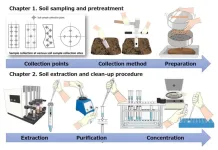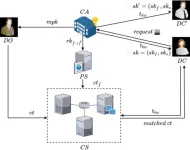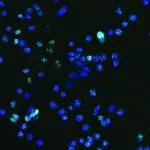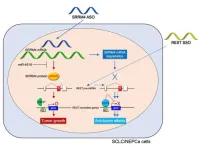Scientists discover way to “grow” sub-nanometer sized transistors
Opening the path to next-generation semiconductors through epitaxial growth of new Van der Waals materials
2024-07-03
(Press-News.org)
A research team led by Director JO Moon-Ho of the Center for Van der Waals Quantum Solids within the Institute for Basic Science (IBS) has implemented a novel method to achieve epitaxial growth of 1D metallic materials with a width of less than 1 nm. The group applied this process to develop a new structure for 2D semiconductor logic circuits. Notably, they used the 1D metals as a gate electrode of the ultra-miniaturized transistor.
Integrated devices based on two-dimensional (2D) semiconductors, which exhibit excellent properties even at the ultimate limit of material thickness down to the atomic scale, are a major focus of basic and applied research worldwide. However, realizing such ultra-miniaturized transistor devices that can control the electron movement within a few nanometers, let alone developing the manufacturing process for these integrated circuits, has been met with significant technical challenges.
The degree of integration in semiconductor devices is determined by the width and control efficiency of the gate electrode, which controls the flow of electrons in the transistor. In conventional semiconductor fabrication processes, reducing the gate length below a few nanometers is impossible due to the limitations of lithography resolution. To solve this technical problem, the research team leveraged the fact that the mirror twin boundary (MTB) of molybdenum disulfide (MoS₂), a 2D semiconductor, is a 1D metal with a width of only 0.4 nm. They used this as a gate electrode to overcome the limitations of the lithography process.
In this study, the 1D MTB metallic phase was achieved by controlling the crystal structure of the existing 2D semiconductor at the atomic level, transforming it into a 1D MTB. This represents a significant breakthrough not only for next-generation semiconductor technology but also for basic materials science, as it demonstrates the large-area synthesis of new material phases through artificial control of crystal structures.
The International Roadmap for Devices and Systems (IRDS) by the IEEE predicts semiconductor node technology to reach around 0.5 nm by 2037, with transistor gate lengths of 12 nm. The research team demonstrated that the channel width modulated by the electric field applied from the 1D MTB gate can be as small as 3.9 nm, significantly exceeding the futuristic prediction.
The 1D MTB-based transistor developed by the research team also offers advantages in circuit performance. Technologies like FinFET or Gate-All-Around, adopted for the miniaturization of silicon semiconductor devices, suffer from parasitic capacitance due to their complex device structures, leading to instability in highly integrated circuits. In contrast, the 1D MTB-based transistor can minimize parasitic capacitance due to its simple structure and extremely narrow gate width.
Director JO Moon-Ho commented, "The 1D metallic phase achieved through epitaxial growth is a new material process that can be applied to ultra-miniaturized semiconductor processes. It is expected to become a key technology for developing various low-power, high-performance electronic devices in the future."
This research was published on July 3rd in the journal Nature Nanotechnology.
END
[Attachments] See images for this press release:
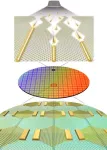

ELSE PRESS RELEASES FROM THIS DATE:
2024-07-03
A final year computer science undergraduate from the University of Bath has been named amongst the UK’s best student game developers, having won an award in the “Games with purpose” category at the Games Innovation Challenge 2024.
Salmaan Zhang competed against university and college students from across the country to win one of seven categories in the competition, which is sponsored by UNiDAYS and delivered by NSE (National Student Esports).
The challenge asked students in the UK to create the most innovative game in just eight weeks. Submitted entries were shortlisted and then judged by industry experts in several ...
2024-07-03
Concern about the effects of PFAS are of increasing globally. Also there is no accurate method for analyzing multiple PFAS in soil. Hence, a team of PFAS researchers led by NARO et.al sought to develop a stable and accurate method for analyzing multicomponent PFAS in the soil (Ministry of Agriculture, Forestry and Fisheries -MAFF project).
Unlike the PFAS analysis method for water samples, it is difficult to ensure the extraction efficiency of the target PFAS in diverse soil samples. In Japan, there are 381 soil types, with volcanic ash soils being the predominant. Since these soils possess high carbon content, ...
2024-07-03
Many cat owners are familiar with torn cushions, carpets, and couches. The feline instinct to scratch is innate but is often perceived as a behavioral problem by cat owners and sometimes leads to interventions that are not cat friendly.
Now, an international team of researchers has investigated which factors influence undesired scratching behavior in domestic cats. They published their findings in Frontiers in Veterinary Science.
“Here we show that certain factors – such as the presence of children at home, personality traits of cats, and their activity levels – significantly impact the ...
2024-07-03
The security of traditional attribute-based searchable encryption schemes relies on traditional number-theoretic assumptions, and thus they are not able to resist the threat of quantum algorithms. Meanwhile, existing lattice-based searchable encryption schemes have two main problems: one is the low efficiency of the execution of encryption, key generation and search algorithms. The second is the large space required for storing search trapdoors.
To solve the problems, a research team led by Yang YANG published their new ...
2024-07-03
The hot-end components of high-performance high-speed aircrafts need to meet performance requirements such as long service life, wide temperature range oxidation resistance and ablation resistance. This puts forward higher requirements for high-temperature service performance of thermal protection system (TPS).
With low density, low expansion and excellent high temperature mechanical properties, carbon-carbon (C/C) composites are expected to be the best choice for the new generation of TPS. However, the oxidation sensitivity of C/C composites severely limits their service life in high-temperature ablation environment. It ...
2024-07-03
Behavioral interventions are strategies designed to help people change their behaviors in a way that is positive for themselves and the community. These behaviors can relate to various topics, such as health, citizenship, ecology, and more. Interventions can be applied individually, like someone seeing a psychologist to quit smoking, or collectively, such as NGOs and public institutions investing in anti-smoking campaigns or raising awareness about the dangers of drunk driving.
Understanding how to adapt behavioral interventions to different cultures is essential for the success of health ...
2024-07-03
New class of cancer mutations discovered in so-called ‘junk’ DNA
Using artificial intelligence, Garvan Institute researchers have found potential cancer drivers hidden in so-called ‘junk’ regions of DNA, opening up possibilities for a new approach to diagnosis and treatment.
Non-coding DNA – the 98% of our genome that doesn’t contain instructions for making proteins – could hold the key to a new approach for diagnosing and treating cancers, according to a new study from the Garvan Institute of Medical Research. The findings, ...
2024-07-03
Ever wondered why you performed worse than expected in that final university exam that you sat in a cavernous gymnasium or massive hall, despite countless hours, days and weeks of study? Now you have a genuine reason – high ceilings.
New research from the University of South Australia and Deakin University has revealed a link between rooms with high ceilings and poorer examination results.
A study published in the Journal of Environmental Psychology, led by architecture and psychology-trained UniSA researcher Dr Isabella Bower in collaboration with educational psychology researcher Associate Professor Jaclyn Broadbent from Deakin University, demonstrates that building design impacts ...
2024-07-03
A world-first study has found low-dose aspirin may treat flu-induced blood vessel inflammation, creating better blood flow to the placenta during pregnancy.
Animal studies examined whether the treatment for preeclampsia could be applied to flu infections – and the results, according to the research team, were very promising.
Lead researcher and RMIT Post-Doctoral Research Fellow, Dr Stella Liong, said flu infections during pregnancy can resemble preeclampsia, a pregnancy complication that causes inflammation to the aorta and blood vessels.
Low-dose aspirin is commonly taken to prevent preeclampsia, as it stops the body from creating chemicals that cause ...
2024-07-03
Osaka, Japan – Neuroendocrine tumors, including small cell lung cancer and neuroendocrine prostate cancer, are very aggressive with high chances of spreading. However, many individuals develop resistance to few available treatment options, leading to poor patient outcomes. Researchers are therefore aiming to develop new therapeutic methods that focus on the disease-specific molecular mechanisms of these tumors.
In a recent article published in Molecular Therapy: Nucleic Acids, a team of researchers at Osaka University describe a strategy targeting one such mechanism, called RNA splicing.
RNA splicing is the process ...
LAST 30 PRESS RELEASES:
[Press-News.org] Scientists discover way to “grow” sub-nanometer sized transistors
Opening the path to next-generation semiconductors through epitaxial growth of new Van der Waals materials



